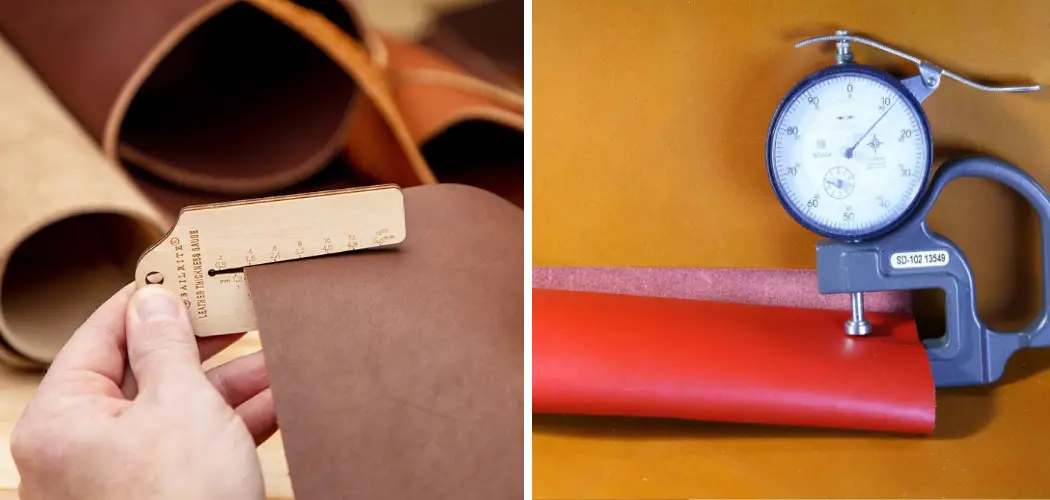Leather is a versatile and durable material that has stood the test of time. However, it is important to ensure that you are getting the right amount of leather for your projects. Measuring leather can be a challenge, especially for beginners. In this blog post, we will guide you through the step-by-step process of how to measure leather and provide helpful tips to ensure that your measurements are accurate. So keep reading to learn more!
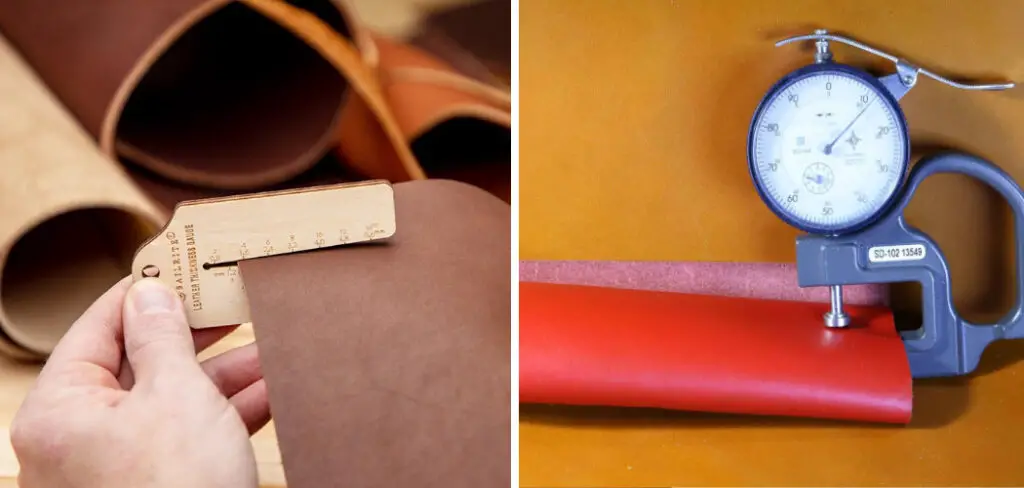
Can You Measure Leather?
Leather has long been a timeless material used in clothing, upholstery, and accessories. But have you ever wondered if it’s possible to measure the quality of leather? The answer is yes! Leather can be measured by its thickness, texture, and flexibility.
The thickness of the leather determines its durability, while the texture and flexibility come from the tanning process. Generally, the higher the quality of leather, the more refined and luxurious it will feel. So next time you’re shopping for leather goods, remember these factors to ensure you’re getting the best quality product possible.
Why Should You Measure Leather?
Leather is a unique and valuable material that has been used for centuries in various industries, from fashion to furniture. However, not all leather is created equal. The quality of leather can vary greatly depending on factors such as the animal it comes from, the tanning process used, and the finishing techniques employed. That’s why measuring leather is so important.
By measuring leather’s thickness, strength, and other properties, you can determine its quality and suitability for specific applications. This ensures that you’re getting the most value for your money and helps you make more informed purchasing decisions.
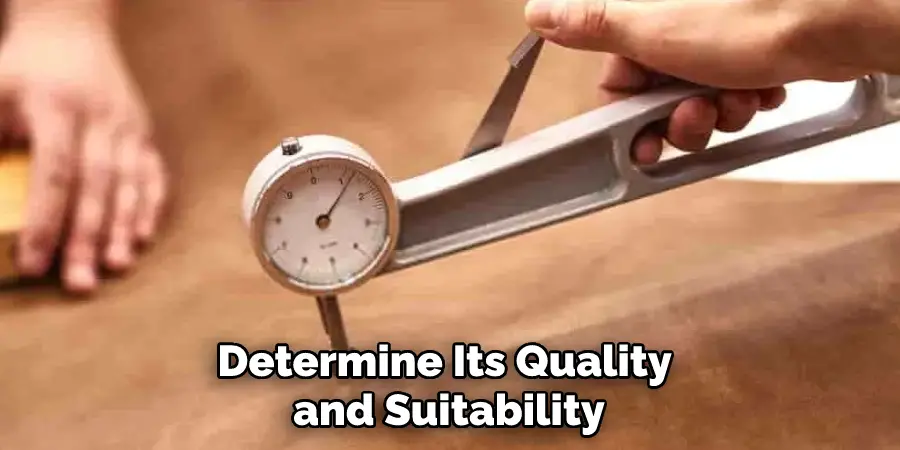
So whether you’re a fashion designer looking for high-quality leather for your latest creations or a furniture maker searching for durable upholstery materials, measuring leather is a crucial step in the process.
7 Steps to Follow on How to Measure Leather
Step 1: Gather Your Materials
Before you start measuring your leather, you will need a few tools. A measuring tape, a ruler, a clear straight edge, and a marker are all essential. It is important to note that inconsistency in measurement tools can lead to significant variations; therefore, using a single tool for all measurements is advisable.
Step 2: Determine the Shape of The Leather
Leather comes in different shapes, and unconventional shapes can be tricky to measure. For standard-shaped leather, such as rectangles and squares, simply measure the length and the width. However, leather scraps or pieces of odd shapes require some creativity.
To measure a curvy shape, lay it flat on a large firm surface and gently stretch the leather so that it conforms to the surface. Now measure the length and width of the stretched leather to get an accurate measurement.
Step 3: Determine the Thickness of The Leather
To measure the thickness of your leather, use a ruler. Place one edge of the ruler down on the surface and then place your leather on top. Carefully slide it to the other end of the ruler until both edges meet. The measurement indicated at that point is the thickness of your leather.
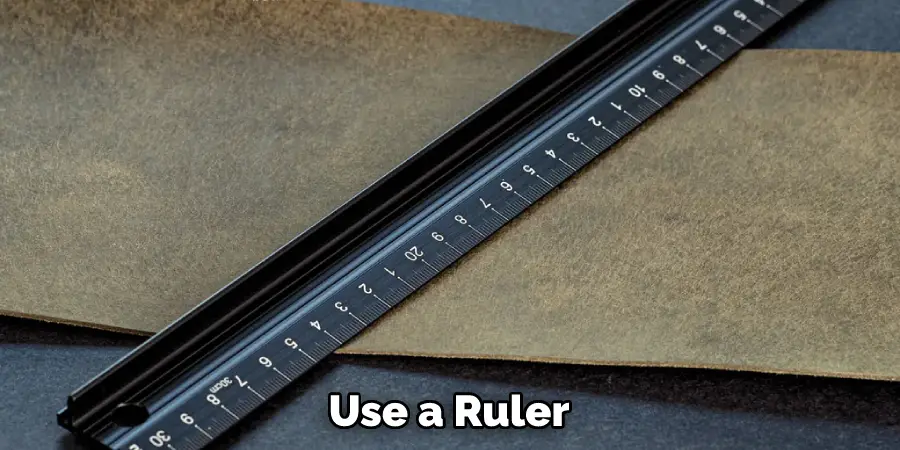
Step 4: Determine the Grain
Grain refers to the direction of the leather fibers. To find out what direction your leather’s fibers are running in, use a marker and run it along one edge of the leather. If the marker stays more or less in line with that single edge, you can assume your leather is running in straight grain. If the marker arcs or arches along the edge, your leather runs with cross grain or bias.
Step 5: Determine the Density
Density refers to how tightly packed the fibers are in your leather. To find out your leather’s density, press it down with a ruler and observe how deep the ruler goes.
Step 6: Determine the Finish
Different leathers have different finishes or treatments that can affect their thickness, appearance, and durability. Use a magnifying glass to examine the surface of your piece of leather closely. If you see small raised bumps, you have suede; if it is smoother, it is likely smooth-finish leather.
Step 7: Document Your Measurements
Make sure to document all of the measurements you have taken so that you can keep track of them easily later. This will also come in handy if you are measuring multiple pieces of leather, as you won’t need to take the same measurements again and again.
That’s it! You’ve now learned how to measure leather accurately. By following these seven simple steps, you will be able to get the exact measurements of your leather pieces and make sure they fit perfectly in whatever project you are working on!
5 Considerations Things When You Need to Buy the Measure Leather
1. The Quality of The Leather
When you are looking for a good piece of measured leather, you need to consider the quality of the leather. You can determine the leather’s quality in a few different ways. One way is to look at the grain. The grain should be tight, and there should be no visible imperfections. Another way to determine the quality of the leather is to feel it. The leather should be soft and smooth, with no roughness or stiffness.
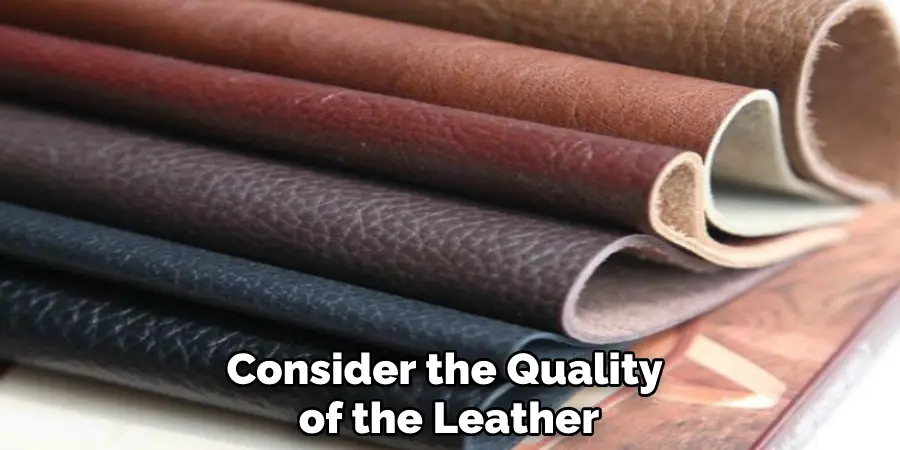
2. The Thickness of The Leather
Another consideration when you are choosing to measure leather is the thickness of the leather. The thickness will affect how durable the leather is and how long it will last. Thicker leather will be more durable and last longer, but it will also be more expensive.
3. The Color of The Leather
The color of the leather is another factor to consider when you are choosing to measure leather. You want to choose a color that matches your other gear. You also want to consider how easy it will be to find replacement pieces in the same color if you need them.
4. The Price of The Leather
Of course, the price is one of the most important considerations when measuring leather. You want to find an affordable piece but also make sure it is high quality. There are a few different ways to find out how much a piece of measured leather will cost. One way is to ask around at different stores or online retailers. Another way is to check out reviews from other customers who have purchased measured leather before.
5. The Warranty on The Leather
Finally, you want to make sure that you understand the warranty on the measured leather before you purchase it. This will help you know what your rights are if something goes wrong with the product after you have purchased it. Ensure you understand how long the warranty lasts and what it covers before you purchase. Being informed about the warranty will give you peace of mind when you purchase your measured leather.
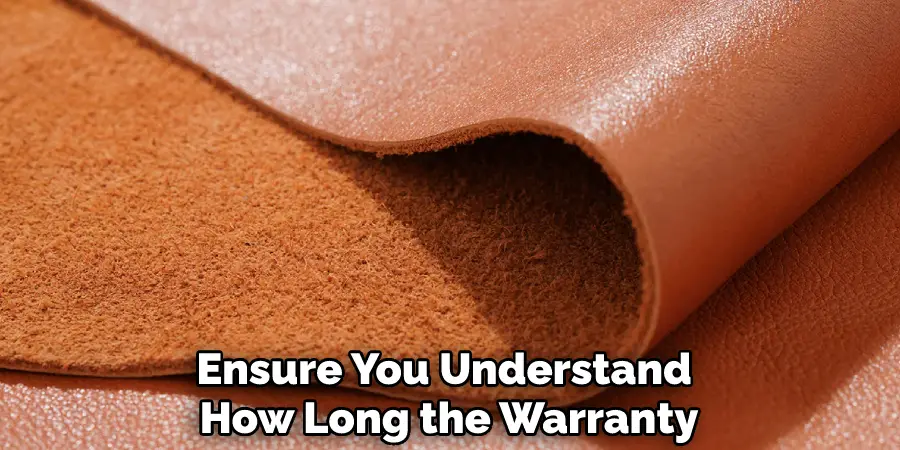
By following these five guidelines, you can ensure you are buying a quality piece of measured leather worth your investment. Measure leather is a great addition to any wardrobe or gear collection, and with the right knowledge, it can last for many years. So make sure to consider each of these factors before you buy your next piece of measured leather!
5 Benefits of Measure Leather
1. It Is a Natural Product.
Leather is a natural product that is made from the skin of animals. It is durable and has been used for centuries for a variety of purposes, including clothing, footwear, and upholstery.
2. It Is Environmentally Friendly.
Leather is an environmentally friendly material as it does not require the use of synthetic chemicals or dyes. Additionally, leather is biodegradable and will break down over time when exposed to the elements.
3. It Is Durable.
Leather is a durable material that can last many years with proper care. It is resistant to tearing and abrasion, making it an ideal choice for items that will see heavy use.
4. It Looks Better with Age.
Unlike other materials, leather actually looks better with age as it develops a patina over time. This patina gives the leather a unique appearance that can add character and charm to any item made from it.
5. It Is Comfortable.
Leather is a soft and supple material that is comfortable to wear or use. It conforms to your body’s shape and will mold it over time, making it even more comfortable.
Measured leather has a lot of great benefits to offer and is an excellent choice for many applications. Whether you are looking for clothing, footwear, or upholstery, measured leather can meet your needs and help you achieve the look and feel you desire. Be sure to consider all the factors outlined in this article when choosing the right piece of leather for you!
4 Common Mistakes People Make When Trying to Measure Leather
1. Not Measuring the Right Way
One of the most common mistakes people make when trying to measure leather is not measuring the right way. When measuring leather, you need to use a soft tape measure and start at the point where the leather meets the seam. You then need to measure all the way around the piece of leather until you get back to the seam.
2. Not Measuring Accurately
Another common mistake people make when measuring leather is not measuring accurately. When measuring leather, you need to make sure that you are using a soft tape measure and that you are starting at the point where the leather meets the seam. You also need to make sure that you measure all the way around the piece of leather until you get back to the seam.
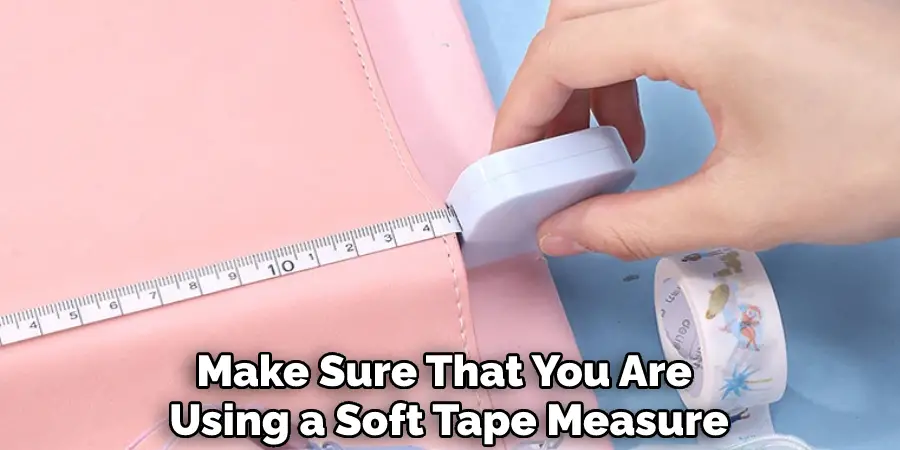
3. Not Measuring in Inches
Another common mistake people make when measuring leather is not measuring in inches. When measuring leather, you need to use a soft tape measure and start at the point where the leather meets the seam. You then need to measure all the way around the piece of leather until you get back to the seam. Make sure that you are using inches as your unit of measurement.
4. Not Using a Standard Unit of Measurement
The final common mistake people make when measuring leather is not using a standard unit of measurement. When measuring leather, you need to use a soft tape measure and start at the point where the leather meets the seam. You then need to measure all the way around the piece of leather until you get back to the seam.
Make sure that you are using a standard unit of measurement and not an arbitrary one such as “hands” or “feet.” This will ensure that you are getting the most accurate measurement possible.
Does the Type of Leather Affect Measurement Techniques?
Leather has been a popular material in various industries for centuries. From fashion to automotive, its versatility is unmatched. However, did you know that the type of leather used in your products can affect measurement techniques? It’s true! The thickness of the hide, the texture, and the tanning process all play a role.
Leather that has been tanned to be firm and sturdy may be more difficult to manipulate for precise measurements. On the other hand, thinner, more pliable leather can be easily molded to the desired shape, resulting in more accurate measurements. It’s important to consider the type of leather used when evaluating measurements for your leather products.
Is It Better to Buy More or Less Extra Material than Is Needed When Measuring Leather Pieces?
When it comes to measuring leather pieces, it can be tempting to buy more extra material than is needed just to be safe. However, this may not always be the best approach. Purchasing excessive amounts of extra material can be costly and add unnecessary clutter to your workspace. On the other hand, buying too little material can result in frustration and delays if mistakes are made during the cutting process.
Finding the right balance between buying enough material and not overspending can be tricky, but ultimately it is a decision that should be based on the specific project at hand. Planning and measuring out your leather pieces carefully can save you money and hassle in the long run.

Conclusion
Leather measurements can be confusing, but with these tips, you can accurately measure leather for any project. Remember to use the same tool throughout, measure the leather when it is laid flat, and determine the shape and texture of the leather before measuring. By following these steps, you will be sure to have enough leather for your project and avoid wastage. Thanks for reading our post about how to measure leather.

